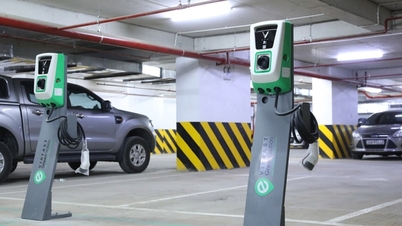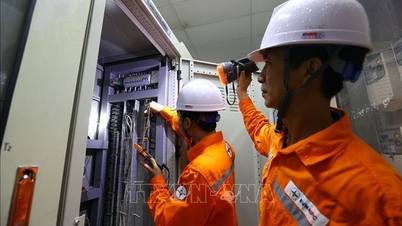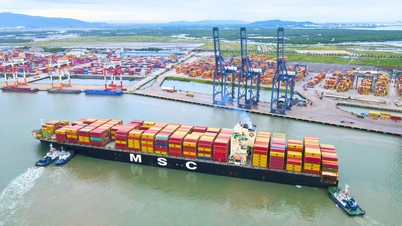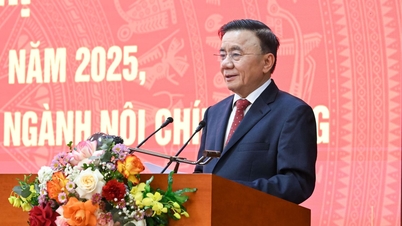
Energy experts believe that the causes of losses need to be clarified and transparency ensured before they are allocated to electricity prices - Photo: T.PH.
Previously, in the draft Decree 72 (amended) regulating the mechanism for adjusting the average retail electricity price, which was recently released for public comment, the Ministry of Industry and Trade proposed including EVN's losses in the electricity price to allow for the recovery of costs directly related to electricity production and supply that had not been accounted for.
The information released is still not transparent.
Speaking to Tuoi Tre newspaper, Dr. Nguyen Huy Hoach - an expert from the Scientific Council of the Vietnam Energy Association - stated that Decree 72, recently issued by the Government and effective from March 28th, only came into effect a few months prior. However, the Ministry of Industry and Trade, the agency responsible for drafting the decree, failed to fully consider and assess all issues related to the pricing structure and the issue of EVN's losses.
"Even though the new decree has only been in effect for nearly 5 months, it has already required amendments. The proposed amendments, based on EVN's losses, including losses from electricity production and business costs and exchange rate losses, as a basis for revising the pricing structure... are unconvincing," Mr. Hoach emphasized.
While supporting the full accounting of reasonable and legitimate direct costs that increase electricity prices... to ensure the business efficiency of EVN and the electricity sector, and to guarantee energy security and power supply, Mr. Hoach suggested that the Ministry of Industry and Trade should investigate and disclose the specific causes of EVN's losses.
"Only when the specific reasons for EVN's losses, as presented by the Ministry of Industry and Trade, are convincing to electricity users, will the amendment of regulations to legitimize EVN's losses receive public consensus," Mr. Hoach said, adding that although the Ministry of Industry and Trade publishes EVN's electricity production and business costs annually, the published information still lacks transparency and clarity.
Citing the structure of power sources, Mr. Hoach noted that the proportion of coal-fired power has increased, and the cost of coal-fired power generation has risen due to periods of high fluctuations in world coal prices. However, about 25-30% of the power source structure is still hydropower with low costs, which can help offset the cost of electricity production. Therefore, the explanation for input fluctuations due to world coal and fuel prices is not entirely convincing.
According to Mr. Hoach, electricity is a monopoly sector as EVN still produces over 30% of the electricity and plays a major role in transmission and distribution. While electricity prices have been adjusted upwards three times consecutively since 2023, the proposal to account for this as other expenses, with a loss exceeding 44,000 billion VND, raises doubts and consumers perceive a lack of transparency.
"Customers need a clearer explanation of the factors behind those losses, whether subjective or objective, whether it's due to delayed price adjustments, fluctuations in input prices, or unreasonable investments and inappropriate operational management?", Dr. Hoach questioned.

According to experts, low-cost hydropower still accounts for 25-30% of the electricity generation structure - Photo: NAM TRAN
The causes of the losses need to be clarified.
Speaking to Tuoi Tre newspaper, Mr. Ha Dang Son from the Center for Energy and Green Growth Research said that amending the regulations in Decree 72 is necessary to ensure clarity on the costs included in electricity prices. This is especially important for costs directly related to electricity production, transmission, supply, and distribution that have not been fully covered in retail prices, along with unallocated exchange rate differences from revaluation.
This aims to ensure that reasonable and legitimate costs are fully reimbursed and to preserve and develop state capital at EVN, as well as to ensure the development of the electricity sector and national energy security. However, Mr. Son believes that the proposal to "include all" losses in electricity prices while the corporation has not yet provided a full report or explanation of the causes of these losses is "unsatisfactory".
"The cost structure of electricity production and business is calculated based on factors including electricity production, transmission, distribution, and industry management service costs... Among these factors, the causes of EVN's losses have not been clearly distinguished as subjective or objective, whether due to price management policies or inadequate management and operation," Mr. Son said.
However, according to energy experts, EVN's losses are attributed to fluctuations in input material prices, increased electricity production and business costs such as coal and gas prices, the cost of purchasing high-priced power sources, and unallocated exchange rate losses. The cost of electricity production and business has also accumulated over many years.
Meanwhile, electricity prices were not adjusted in a timely manner, further increasing EVN's losses, especially during the 2022-2023 period. However, other costs such as electricity loss rates, distribution and transmission factors, and inefficient operational management contributing to the electricity sector's losses have not been clearly identified.
Specifically, according to Mr. Son, EVN's audited financial report does not clarify the specific items with related costs, which factors increased costs compared to the business plan, and which factors have been optimized or reduced. For example, how EVN subsidized electricity costs for people affected by the COVID-19 pandemic, or how fluctuations in raw material prices caused losses...
"It needs to be clarified further to allocate costs rationally, directly impacting the cost of electricity production into the average retail electricity price. If the cost is due to power losses, unreasonable operating costs, or poor management, then adjustments and restructuring must be found... but accounting for losses and allocating them to electricity prices is unreasonable," Mr. Son said.
Are the costs of electricity production and supply not being fully accounted for?
According to the Ministry of Industry and Trade, the mechanism for adjusting the average retail electricity price is currently being implemented according to Decree 72. However, this decree needs to be amended and supplemented to allow for the recovery of costs directly related to electricity production and supply that were not fully accounted for or compensated in the previous average retail electricity price.
Citing EVN's report, the Ministry of Industry and Trade stated that due to the impact of the global geopolitical situation, electricity purchase costs increased significantly during 2022-2023, causing EVN to face many difficulties in its production and business operations, with accumulated losses of approximately 50,029 billion VND over these two years. By 2024, the accumulated losses of the parent company EVN still amounted to approximately 44,792 billion VND. Therefore, if these losses are not factored into electricity prices, it will not be possible to promptly compensate for the reduction in state investment capital in previous years.
Previously, EVN also proposed to the Ministry of Industry and Trade to report to the Government to allow the calculation of accumulated losses and direct costs for electricity production and supply that have not been included in the average retail electricity price, so that these costs can be included in the retail electricity price.
EVN's business management costs have increased significantly.
According to EVN's 2024 financial report, the group recorded a cumulative loss of VND 45,374 billion, a 10% decrease compared to the previous year, thanks to a net profit of VND 5,237 billion in 2023. The majority of EVN's cumulative losses occurred during the 2022-2023 period, with losses of VND 26,498 billion and VND 23,529 billion respectively.
Analysis of the business results shows that in both years of the heaviest losses, the parent company EVN was in a situation of selling below cost, meaning revenue did not cover expenses. For example, in 2023, revenue reached VND 405,466 billion, while the cost of goods sold amounted to VND 433,173 billion, nearly 7% higher. Similarly, in 2022, EVN's revenue reached VND 373,187 billion, while the cost of goods sold was nearly 8% higher.
Entering 2024, EVN recorded revenue of VND 479,835 billion and cost of goods sold of VND 470,910 billion. Therefore, EVN achieved a positive gross profit of VND 8,924 billion compared to a loss of VND 27,707 billion in the same period. As a result, the parent company EVN reported a net profit after tax of VND 5,237 billion, compared to a very large loss in the same period. It can be seen that after the increase in electricity prices, EVN's gross profit from electricity sales has improved significantly to over VND 46,400 billion.
Therefore, EVN still recorded consolidated pre-tax profit of VND 9,436 billion, despite a decrease in profits from associated companies and financial revenue, while selling and administrative expenses increased. Specifically, in 2024, EVN's selling expenses reached VND 7,308 billion, an increase of nearly 11% compared to 2023. Meanwhile, administrative expenses increased by more than VND 930 billion, reaching VND 15,734 billion.
Source: https://tuoitre.vn/dua-khoan-lo-cua-evn-vao-gia-dien-tram-dau-do-dau-nguoi-dung-dien-20250818235606732.htm







































![[Photo] Prime Minister Pham Minh Chinh holds a phone call with the CEO of Russia's Rosatom Corporation.](/_next/image?url=https%3A%2F%2Fvphoto.vietnam.vn%2Fthumb%2F1200x675%2Fvietnam%2Fresource%2FIMAGE%2F2025%2F12%2F11%2F1765464552365_dsc-5295-jpg.webp&w=3840&q=75)










































































Comment (0)